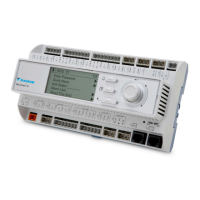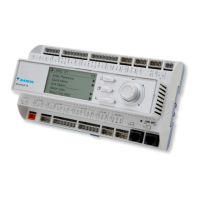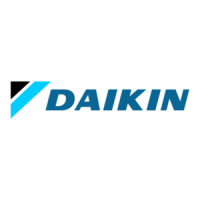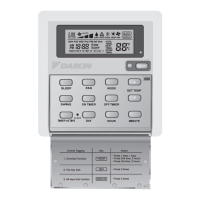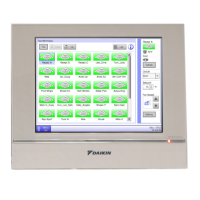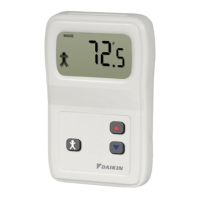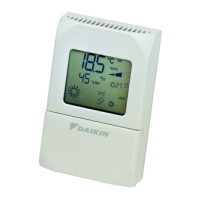OM 752-4 24 www.DaikinApplied.com
desCrIptIon of operatIon
Occupancy Modes
The UVC is provided with four occupancy modes: Occupied, Standby, Unoccupied,
and Bypass. The occupancy mode affects which heating and cooling temperature set
points are used, affects IAF operation, and affects OAD operation. The Manual Adjust
Occupancy and Networked Occupancy Sensor network variables, along with the Unoc-
cupied and Tenant Override binary inputs, are used to determine the Effective Occu-
pancy. Certain inputs will be ignored when another network variable or binary input with
a higher priority has a specic input value.
Note: The Occupancy Override Input is provided as a way for a network connection to manually
force the UVC into a particular occupancy mode. The Occupancy Override Input can
override the tenant override feature. For example, if the network uses the Occupancy
Override Input to force the unit into unoccupied mode, then the tenant override switch
does not operate as expected. Therefore, Daikin strongly recommends using the
Occupancy Sensor Input to control occupancy modes over a network and only using the
Occupancy Override Input if there is reason to ensure tenant override does not occur.
Table 12: Occupancy mode priority
Priority result
Occupancy Over-
ride input
Occupancy sensor
input
1
Unoccupied binary input
Effective
occupancy
output
2
Occupied Ignored Ignored Occupied
Unoccupied Ignored Ignored Unoccupied
Bypass
Occupied Ignored Occupied
Unoccupied Ignored Bypass
Null (default)
Contacts open (Occupied) Occupied
Contacts closed (Unoccupied) Bypass
Standby Ignored Ignored Standby
Null (default)
3
Occupied Ignored Occupied
Unoccupied Ignored Unoccupied
4
Null (default)
Contacts open (Occupied) Occupied
Contacts closed (Unoccupied) Unoccupied
4
1. Network input.
2. Network output.
3. Typical operation is dened in this row of the table.
4. The tenant override switch (unit or wall sensor mounted) can be used here to force the UVC into bypass.
Occupied Mode
The occupied mode is the typical day time mode of UVC operation. During occupied
mode the UVC uses the occupied heating and cooling set points, the OAD operates
normally, and by default the IAF remains on.
Unoccupied Mode
The unoccupied occupancy mode is the typical night time or weekend mode of UVC
operation. During unoccupied mode the UVC uses the unoccupied heating and cooling
set points, the OAD remains closed, and the IAF cycles as needed for heating or cool-
ing. The IAF remains off when there is no need for heating or cooling.
Standby Mode
The standby mode is a special purpose daytime mode of UVC operation. During stand-
by, mode the UVC uses the standby heating and cooling set points, the OAD remains
closed, and by default the IAF remains on. The standby set points are closer to the oc-
cupied set points versus the unoccupied set points. This allows the space to achieve the
desired occupied condition more quickly than when coming out of an unoccupied mode.
Bypass Mode
The bypass mode (also called Tenant Override) is the equivalent of a temporary occupied
mode. Once the bypass mode is initiated, it remains in effect for a set period of time (120
minutes, default). During the bypass mode, the UVC uses the occupied heating and cool-
ing set points, the OAD operates normally, and by default the IAF remains on.

